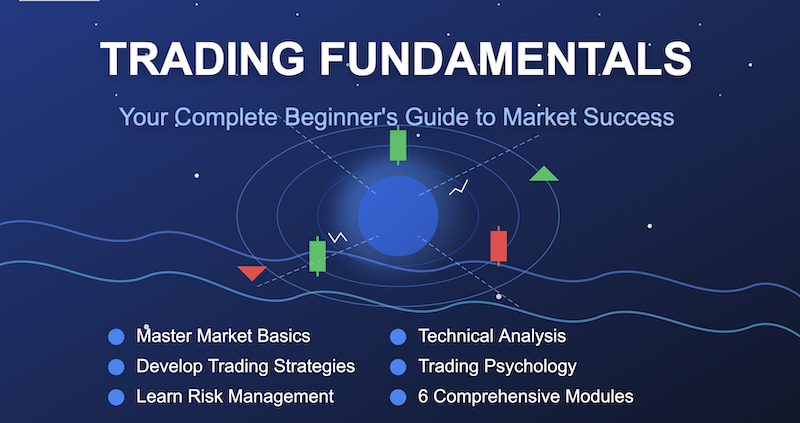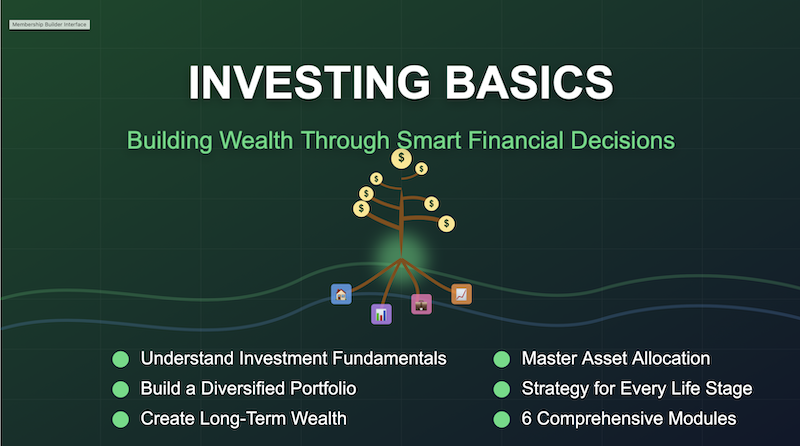Gold vs. Oil vs. Agricultural Futures: Which Commodity Sector Offers the Best Opportunities in 2025?
28 min read
Published: May 25, 2025, 7:12 a.m. ET
Key Points
⚡Gold Leads as 2025's Top Commodity Play Central bank buying spree continues while monetary easing policies drive gold toward record highs,
making it the standout defensive asset with strong structural support.
⚡ Oil Faces Persistent Headwinds Crude prices remain under pressure from global supply gluts and weak Chinese demand, limiting upside potential
despite ongoing geopolitical risk premiums.
⚡ Agricultural Markets Show Mixed Signals Wheat emerges as the bright spot with prices expected at $6.50-7.50 per bushel due to supply constraints,
while corn and soybeans struggle with oversupply issues.
⚡ Defensive Positioning Favored Risk-adjusted returns strongly favor overweighting precious metals in commodity allocations, with gold offering
superior diversification benefits amid current macroeconomic uncertainty.
The commodity landscape entering 2025 presents investors with stark contrasts across sectors. While traditional diversification benefits of commodity exposure remain relevant, the fundamental drivers affecting precious metals, energy, and agricultural markets have diverged significantly, creating distinct risk-return profiles that demand careful analysis.
1. The Macroeconomic Backdrop
Global commodity prices face downward pressure as faltering economic growth coincides with ample supply conditions, with the World Bank projecting a 12% decline in commodity prices for 2025.
This broad-based weakness, however, masks significant sector-specific dynamics that create both challenges and opportunities for discerning investors.
The current environment is characterized by several key factors influencing commodity markets.
Central bank monetary policies continue to evolve as inflation concerns moderate, creating divergent impacts across commodity sectors. Geopolitical tensions remain elevated, particularly affecting energy markets and safe-haven demand for precious metals.
Additionally, climate-related supply disruptions continue to influence agricultural markets, while China's economic recovery trajectory remains a critical variable for industrial commodity demand.
AvaTrade offers professionally designed model portfolios
2. Gold: The Defensive Champion
Central Bank Demand Drives Structural Support
Gold has emerged as a bright spot for the commodity sector, with central banks driving prices higher, and this trend appears poised to continue throughout 2025. Market analysts expect gold to hit new record highs in 2025, supported by central bank monetary policy easing and potential moves to safe-haven assets amid escalating trade tensions.The fundamental case for gold rests on several pillars. First, central bank purchasing patterns have shifted decisively toward gold accumulation as reserve diversification strategies gain priority amid geopolitical uncertainty. Second, real interest rates remain relatively low despite recent Federal Reserve policy adjustments, maintaining gold's opportunity cost advantage. Third, currency debasement concerns continue to support precious metals as monetary policy tools remain accommodative across major economies.
Technical and Fundamental Convergence
From a technical perspective, gold has demonstrated remarkable resilience, breaking through previous resistance levels and establishing new trading ranges. The metal's performance during periods of both risk-on and risk-off sentiment suggests underlying structural demand that transcends traditional cyclical patterns.The supply side presents additional support factors. Mining production growth has moderated as easily accessible reserves become scarcer and environmental regulations tighten. This supply constraint, combined with sustained investment demand through exchange-traded funds and direct purchases, creates a favorable supply-demand dynamic.
Risk Considerations
Despite the bullish outlook, gold investors must consider potential headwinds. A stronger-than-expected economic recovery could reduce safe-haven demand, while aggressive monetary tightening by major central banks could increase opportunity costs. Additionally, profit-taking by long-term holders after significant price appreciation could create short-term volatility.
WATCH LIST
Ready to put time on your side? With AvaTrade's instant account setup, you can begin investing in top companies like Apple, Microsoft, and Google in minutes.
3. Oil: Navigating Oversupply Challenges
Supply Glut Pressures Persist
Crude oil prices face continued pressure in 2025, dragged down by weak Chinese demand and a supply glut. This challenging environment reflects both cyclical and structural factors that limit upside potential for energy futures.The supply side remains problematic for oil bulls. U.S. shale production has demonstrated remarkable resilience despite price volatility, while OPEC+ production discipline faces internal pressures as member countries balance market share concerns with revenue needs. Additionally, strategic petroleum reserve releases by major consuming nations continue to add supply flexibility during price spikes.
Demand Dynamics and China Factor
Chinese demand, historically a key driver of global oil consumption growth, has disappointed throughout 2024 and shows limited signs of acceleration. This weakness reflects both economic restructuring toward less energy-intensive sectors and accelerated adoption of electric vehicles and alternative energy sources.European demand similarly faces structural headwinds as energy efficiency improvements and renewable energy deployment reduce petroleum consumption. While emerging market demand provides some offset, the pace of growth has moderated significantly from previous decades.
Geopolitical Premium Remains
Despite fundamental challenges, oil markets retain sensitivity to geopolitical developments. Geopolitical tensions remain a significant upside risk in commodity markets, providing potential support during crisis periods. However, the effectiveness of strategic reserves and alternative supply sources has reduced the magnitude and duration of geopolitical premiums compared to historical patterns.
Refining Margins and Product Markets
The oil complex extends beyond crude prices to include refined products, where margins have shown greater stability. Diesel and gasoline crack spreads remain supported by refining capacity constraints and product demand that has proven more resilient than crude oil demand in certain regions.
AvaTrade offers professionally designed model portfolios that include optimal allocations to tech leaders like Apple, Microsoft, and Google, balanced with other sectors.
AvaTrade offers professionally designed model portfolios that include optimal allocations to tech leaders like Apple, Microsoft, and Google, balanced with other sectors.
4. Agricultural Futures: A Tale of Individual Markets
Wheat: Supply Constraints Drive Opportunity
Wheat prices are forecast to remain high in 2025, ranging from $6.50 to $7.50 per bushel, due to global supply chain constraints and continued demand for U.S. wheat. This strength reflects both supply disruptions from major producing regions and sustained export demand.Weather-related production challenges in key growing regions have tightened global wheat balances. Russia and Ukraine, traditionally major exporters, continue to face logistical and political constraints that limit export capacity. Argentina's production has been affected by adverse weather conditions, while Australia faces ongoing climate-related challenges.The demand side remains robust, with developing nations maintaining strong import requirements despite higher prices. Food security concerns have elevated wheat's strategic importance, leading to government stockpiling that provides price support.
Corn and Soybeans: Oversupply Concerns
Soybean prices have fallen from $14.20 per bushel in 2022 to $12.55 in 2023, with projections of $11.20 per bushel for 2024 and futures markets suggesting $11.00 per bushel for 2025. This downward trajectory reflects improved production prospects and moderating demand growth.Soybean production continues to exceed usage, with ending stocks projected at 470 million bushels, while the 2024/25 season-average price estimate stands at $11.20 per bushel. This oversupply situation limits price appreciation potential despite renewable diesel demand providing some support.Corn markets face similar dynamics, with favorable growing conditions supporting production while demand growth moderates. Ethanol demand has stabilized, while export competition remains intense as South American producers increase market share.
Weather and Climate Considerations
Agricultural commodities remain highly sensitive to weather patterns, with climate change increasing volatility potential. Recent weather patterns show ample rains affecting large sections of the Corn Belt, illustrating how quickly conditions can change.Seasonal patterns continue to influence agricultural futures, with planting and harvest periods creating predictable volatility windows. However, changing weather patterns have reduced the reliability of historical seasonal tendencies, increasing the importance of real-time weather monitoring.
5. Comparative Risk-Return Analysis
Volatility Profiles
Historical volatility analysis reveals distinct patterns across commodity sectors. Gold typically exhibits lower volatility than oil or agricultural futures, making it more suitable for risk-averse investors seeking commodity exposure. Oil shows higher volatility with significant event-driven price movements, while agricultural futures demonstrate seasonal volatility patterns with weather-related spikes.The correlation matrix between sectors has shifted over time, with gold showing reduced correlation to other commodities during stress periods, enhancing its diversification benefits. Oil maintains higher correlation with broader risk assets, while agricultural futures show mixed correlations depending on specific supply-demand dynamics.
Carry and Storage Considerations
Commodity investing involves carrying costs that vary significantly across sectors. Gold benefits from relatively low storage costs and no spoilage risk, while oil storage costs have become increasingly significant as contango structures emerged. Agricultural commodities face the highest carrying costs due to spoilage risk and seasonal storage patterns.Backwardation and contango structures across commodity curves provide insights into market expectations and carrying cost dynamics. Gold typically trades in slight contango, reflecting storage costs, while oil curves show varying structures depending on supply-demand balances. Agricultural futures often exhibit backwardation during supply stress periods and contango during abundant harvest seasons.
Liquidity and Accessibility
Market liquidity varies considerably across commodity sectors. Gold futures and ETFs offer excellent liquidity with tight bid-ask spreads and deep markets. Oil futures similarly provide strong liquidity, particularly in benchmark contracts like WTI and Brent crude. Agricultural futures show more variation, with major contracts like corn, wheat, and soybeans offering good liquidity while specialty crops may have wider spreads and lower volume.
6. Portfolio Allocation Strategies
Strategic vs. Tactical Approaches
Strategic commodity allocation typically ranges from 5-15% of portfolio value, depending on investor risk tolerance and investment objectives. Within this allocation, the current environment favors overweighting gold relative to other commodity sectors based on risk-adjusted return expectations and correlation benefits.Tactical allocation opportunities emerge from mean reversion tendencies and seasonal patterns. Gold offers fewer tactical opportunities due to its trend-following characteristics, while oil and agricultural futures provide more frequent tactical windows based on inventory cycles and seasonal patterns.
Implementation Vehicles
Investors can access commodity exposure through various vehicles, each with distinct characteristics. Direct futures trading offers the purest exposure but requires active management and margin considerations. Exchange-traded funds provide convenient access with varying structures, from physically-backed gold ETFs to futures-based broad commodity funds. Commodity-focused stocks offer leveraged exposure but introduce company-specific risks that may not align with underlying commodity trends.
Risk Management Considerations
Commodity investing requires careful attention to specific risk factors that differ from traditional asset classes. Contango erosion can significantly impact returns in futures-based investments, particularly during extended periods of oversupply. Seasonal patterns require timing considerations that may not align with overall portfolio rebalancing schedules. Additionally, geopolitical and weather-related event risks can create sudden price movements that exceed normal volatility parameters.
7. Sector-Specific Investment Themes
Precious Metals: Beyond Gold
While gold represents the primary opportunity within precious metals, silver offers higher beta exposure to the same fundamental themes driving gold higher. Industrial demand provides additional support for silver, though this also increases correlation with economic cycles. Platinum and palladium face more challenging fundamentals due to automotive industry shifts toward electric vehicles, reducing catalytic converter demand.
Energy Complex: Refined Products and Natural Gas
Within the energy sector, refined products may offer better risk-adjusted returns than crude oil due to refining capacity constraints and more stable demand patterns. Natural gas presents distinct dynamics driven by power generation demand and export capacity, though weather sensitivity creates significant volatility.
Agricultural Diversification: Protein and Soft Commodities
Beyond grains, livestock futures reflect different supply-demand dynamics with longer production cycles that can create sustained price trends. Reduced cattle herds in 2024 led to cattle price spikes expected to persist in 2025. Soft commodities like coffee and cocoa face unique supply challenges that may create individual opportunities despite broader agricultural weakness.
Regulatory and ESG Considerations
Environmental, social, and governance factors increasingly influence commodity markets. Gold mining faces environmental scrutiny that may constrain future supply growth, potentially supporting long-term prices. Oil and gas investments face growing ESG restrictions that limit institutional participation and may create supply constraints over time.
Agricultural commodities benefit from food security priorities but face sustainability concerns related to water usage and soil depletion. These factors may influence long-term production capacity and create preferences for certain crops or production methods.
Technology and Market Structure Evolution
Commodity markets continue evolving through technological advancement and structural changes. Algorithmic trading has increased short-term volatility while potentially improving long-term price discovery. Blockchain applications in agricultural supply chains may improve transparency and reduce basis risks between futures and physical markets.
The growth of passive commodity investing through index funds has altered seasonal patterns and increased correlation during crisis periods. Understanding these structural changes helps identify when traditional relationships may break down and create opportunity.
Conclusion: Positioning for 2025
The commodity landscape in 2025 presents a clear hierarchy of opportunities based on fundamental analysis and risk-adjusted return expectations. Gold stands out as the preferred sector allocation, supported by central bank demand, monetary policy dynamics, and safe-haven requirements in an uncertain geopolitical environment.
Oil faces the most challenging fundamental backdrop, with supply abundance and demand weakness creating limited upside potential despite geopolitical risk premiums. Agricultural futures present selective opportunities, with wheat offering the strongest fundamentals while corn and soybeans struggle with oversupply conditions.
For portfolio construction purposes, a defensive tilt toward precious metals appears prudent given current macroeconomic conditions and risk-return expectations. Tactical opportunities may emerge in energy and agricultural sectors, but strategic allocations favor gold's combination of capital preservation and inflation protection characteristics.
The key to successful commodity investing in 2025 lies in understanding sector-specific drivers rather than treating commodities as a homogeneous asset class. With fundamental divergences creating distinct risk-return profiles, selective positioning based on thorough analysis will likely outperform broad-based commodity exposure.
Bottom Line: Gold offers the most compelling risk-adjusted opportunity among commodity sectors in 2025, supported by structural demand from central banks and safe-haven flows, while oil faces headwinds from oversupply and weak demand, and agricultural futures present mixed prospects with wheat showing relative strength over grains.
TARGET AUDIENCE: Institutional investors, portfolio managers, financial advisors, and sophisticated individual investors seeking commodity sector analysis and allocation guidance
Risk Disclaimer: This analysis is for educational purposes only and does not constitute investment advice. Commodity futures involve substantial risk of loss and may not be suitable for all investors. Past performance does not guarantee future results. Investors should carefully consider their investment objectives, risk tolerance, and seek professional advice before making investment decisions.
The information provided is for educational purposes only and does not constitute investment advice, trading advice, or financial recommendations. Trading involves significant risk. Past performance is not indicative of future results. Please consult a licensed financial advisor before making any investment decisions
COURSES FOR BEGINNERS

Trading Fundamentals: Complete Beginner's Guide to Market Success

Investing Basics: Through Smart Financial Decisions

Crypto Fundamentals: Understanding Digital Assets

Complete Beginner's Guide for Bonds - Sprint Course
COURSES FOR ADVANCED

Advanced Investing Tactics

Specialized Stock Sectors

Crypto Beyond Basics - Advanced Course

ETF Mastery - Sprint Course
Ready to put time on your side? With AvaTrade's instant account setup, you can begin investing in top companies like Apple, Microsoft, and Google in minutes.

Company Information:
Polonix Academy is owned and operated by Polonix LTD. All content, services, and features offered through this platform are governed by the terms and conditions set forth by Polonix LTD
Risk Disclosure & Disclaimer:
The content on polonixacademy.com is for informational and educational purposes only and should not be construed as professional financial advice. Should you need such advice, consult a licensed financial or tax advisor. References to products, offers, and rates from third party sites often change. While we do our best to keep these updated, numbers stated on this site may differ from actual numbers. We may have financial relationships with some of the companies mentioned on this website. Among other things, we may receive free products, services, and/or monetary compensation in exchange for featured placement of sponsored products or services. We strive to write accurate and genuine reviews and articles, and all views and opinions expressed are solely those of the authors.
If you have a complaint, you can contact [email protected] Complaints related to comparison journeys will be forwarded to the relevant service provider, while article-specific complaints will be addressed directly by the editorial team.
Polonix Academy © Copyright 2025. All Rights Reserved.





